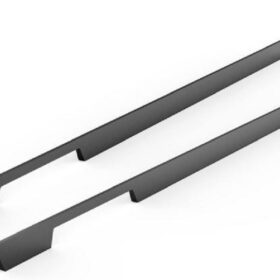Enhancing Kitchen Ergonomics with the Right Cabinet Pull Handles
With the increasing emphasis on functionality and comfort in contemporary home design, kitchen ergonomics has emerged as a crucial aspect of modern kitchens. Among the various factors that influence kitchen ergonomics, the choice of cabinet pull handles plays a significant role in enhancing usability and reducing physical strain. By carefully selecting pull handles that align with the principles of ergonomic design, homeowners can create a kitchen that not only looks stylish but also provides a comfortable and efficient workspace.
Facilitating Ease of Use
> One of the primary benefits of ergonomically designed pull handles is the ease of use they provide. Traditional knobs or handles that require a pinching or twisting motion can cause discomfort over time, especially for individuals with limited hand strength or mobility. On the other hand, pull handles allow for a more natural and comfortable grip, facilitating effortless opening and closing of drawers and cabinet doors. This reduced stress on the hands and wrists promotes greater comfort during everyday kitchen tasks such as cooking and prepping meals.
Providing Adequate Leverage
> Another important ergonomic consideration relates to the leverage provided by pull handles. The length and design of the handles play a crucial role in determining how much force is required to open and close kitchen cabinets. Pull handles that are too short or positioned too far back can require excessive force, leading to strain and fatigue in the arms and shoulders. By choosing handles with an appropriate length and spacing, homeowners can ensure that they can comfortably access all cabinets without putting undue stress on their bodies.
Reducing Wrist Strain
> Repetitive movements, such as opening and closing cabinets, can contribute to wrist strain. Pull handles that encourage a natural wrist position can help mitigate this risk. Handles with a contoured design or a slight curvature allow the wrist to remain in a neutral position, reducing pressure on the tendons and nerves. This ergonomic feature is particularly beneficial for individuals who spend extended periods in the kitchen or have a history of wrist discomfort.
Promoting Accessibility
> In addition to ergonomic considerations, pull handles also play a role in making kitchens more accessible for individuals with various physical abilities. Lever-style handles or handles with an extended reach provide greater leverage and allow users to open cabinets without bending or reaching awkwardly. This accessibility feature is especially important for individuals with limited mobility or wheelchair users, enabling them to navigate the kitchen with ease and independence.
Aesthetic Considerations
> While ergonomics is paramount, it’s also essential to consider the aesthetic appeal of cabinet pull handles. Homeowners can choose from a wide range of styles, finishes, and materials to complement the overall design of their kitchen. From sleek and contemporary handles to ornate and traditional designs, the right pull handles can enhance the visual appeal of the space while simultaneously improving its functionality and comfort.
Conclusion
Enhancing kitchen ergonomics with the right cabinet pull handles is a multifaceted endeavor that involves careful consideration of ease of use, leverage, wrist strain, accessibility, and aesthetic appeal. By selecting pull handles that align with ergonomic principles, homeowners can create a kitchen that not only looks beautiful but also supports their physical well-being. This investment in comfort and functionality will pay dividends in the form of reduced strain, increased efficiency, and a more enjoyable kitchen experience.
-
2024-11-29Top Trends in Modern Kitchen Cabinet Pulls for 2024
-
2024-11-28The Ultimate Guide to Modern Kitchen Cabinet Pulls- Materials, Styles, and Tips
-
2024-11-27Elevate Your Kitchen Design with These Must-Have Modern Cabinet Pulls
-
2024-11-26Sleek and Stylish- The Best Modern Kitchen Cabinet Pulls for a Contemporary Look










